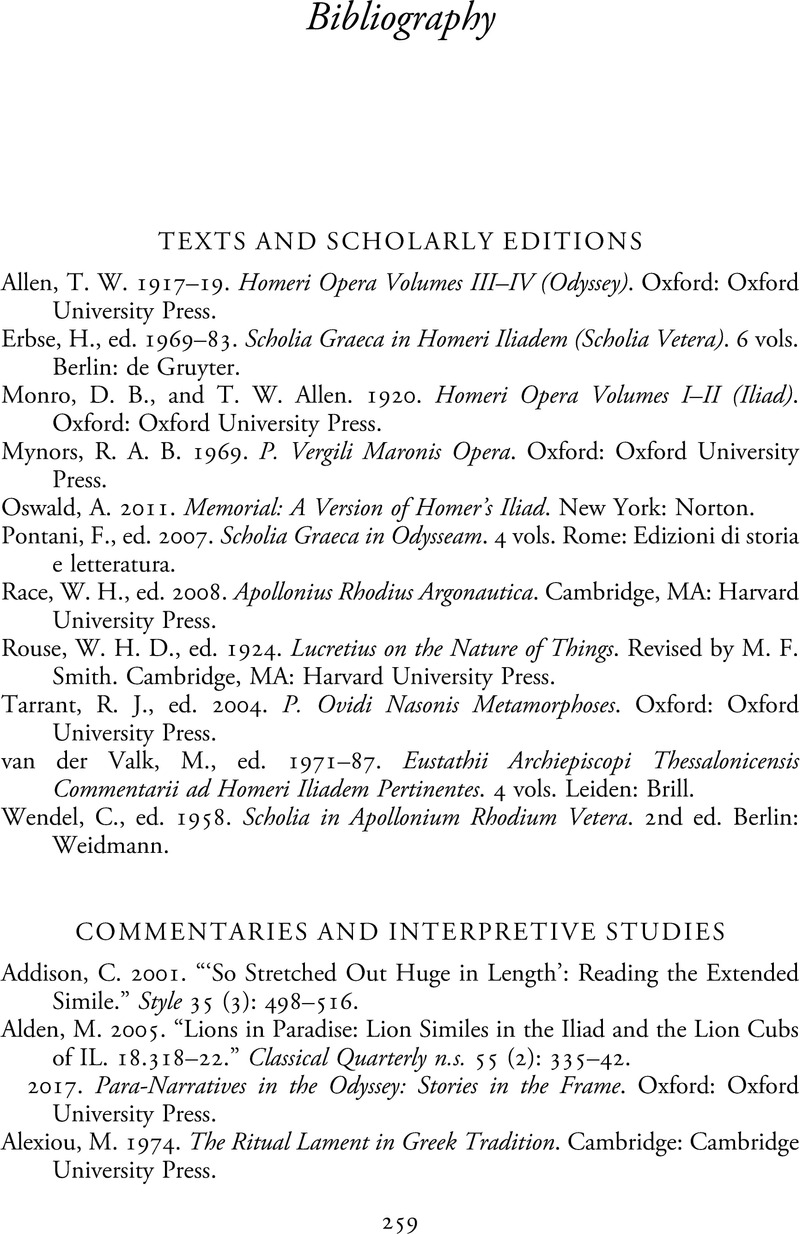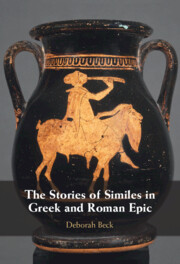Book contents
- The Stories of Similes in Greekand Roman Epic
- The Stories of Similes in Greek and Roman Epic
- Copyright page
- Dedication
- Contents
- Acknowledgments
- Note on Translations
- Abbreviations
- Introduction
- Chapter 1 Homer Odyssey
- Chapter 2 Homer Iliad
- Chapter 3 Apollonius Argonautica
- Chapter 4 Vergil Aeneid
- Chapter 5 Ovid Metamorphoses
- Conclusion
- Bibliography
- Index of Names and Subjects
- Index of Passages Cited
- References
Bibliography
Published online by Cambridge University Press: 06 July 2023
- The Stories of Similes in Greekand Roman Epic
- The Stories of Similes in Greek and Roman Epic
- Copyright page
- Dedication
- Contents
- Acknowledgments
- Note on Translations
- Abbreviations
- Introduction
- Chapter 1 Homer Odyssey
- Chapter 2 Homer Iliad
- Chapter 3 Apollonius Argonautica
- Chapter 4 Vergil Aeneid
- Chapter 5 Ovid Metamorphoses
- Conclusion
- Bibliography
- Index of Names and Subjects
- Index of Passages Cited
- References
Summary

- Type
- Chapter
- Information
- The Stories of Similes in Greek and Roman Epic , pp. 259 - 274Publisher: Cambridge University PressPrint publication year: 2023



